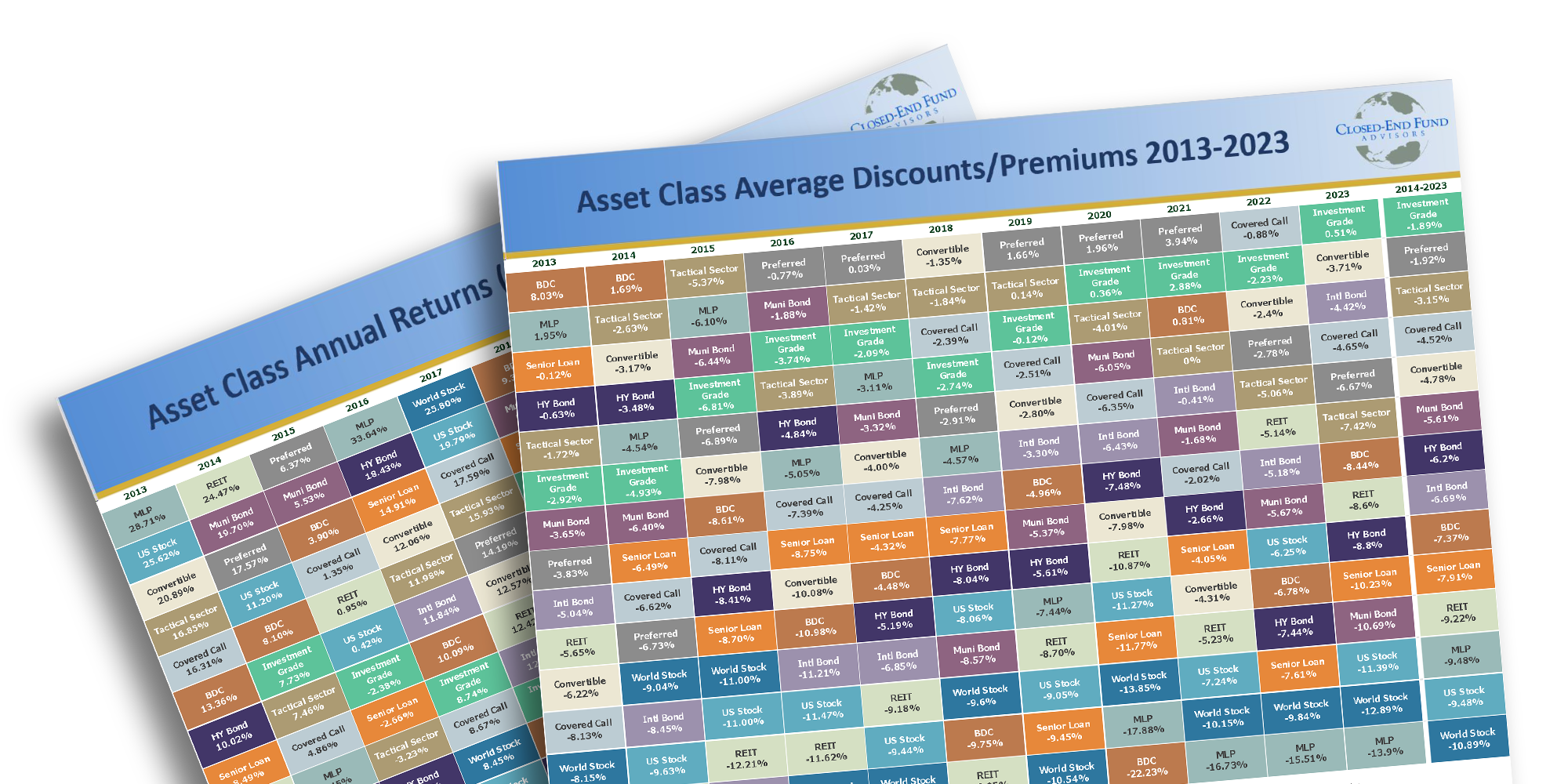DISCLOSURES:
CEFData.com provides data and information on closed-end funds (CEFs), business development companies (BDCs), interval funds, tender offer funds, exchange-traded funds (ETFs), and London-listed closed-end funds (unit trusts). CEFData.com is an information service provided by CEF Advisors, Inc., a registered investment advisor. The data and materials presented are for informational purposes only, are not intended to be relied upon as investment advice or recommendations, and do not constitute a solicitation to buy or sell any security. This information should not be considered specific legal, investment, or tax advice. Investors should consult each fund’s sponsor for detailed, fund-specific risk disclosures and/or seek the guidance of a qualified financial advisor before making investment decisions.
NOTES: Distribution type is sourced from CEFData.com. For specific information about a fund's distribution sources, please visit the fund sponsor's website.
The following applies to CEFs, BDCs, interval funds, tender offer funds, ETFs, and London-listed CEFs (unit trusts): Fund shares are not guaranteed or endorsed by any bank or insured depository institution and are not federally insured by the Federal Deposit Insurance Corporation (FDIC). These securities involve investment risks, including the possible loss of principal. There can be no assurance that a fund’s investment objectives will be achieved. Many closed-end funds and similar exchange traded vehicles frequently trade at a discount or premium to their net asset value (NAV). NAV returns are net of fund expenses and assume reinvestment of distributions.
Performance information, if presented, is for illustrative purposes only. Actual client returns may differ based on individual account holdings, timing, fees, and other factors. Past performance is not necessarily indicative of future results. All investments involve risk, including the risk of loss.Data is obtained from sources believed to be reliable; however, accuracy, completeness, and timeliness cannot be guaranteed. Information may change without notice, and CEF Advisors is under no obligation to update such information. Links to third-party websites are provided for convenience only, and CEF Advisors does not control or guarantee the accuracy or relevance of information on third-party sites. This material is presented for informational purposes only. Under no circumstances should it be considered an offer to sell, or a solicitation to buy, any investment product.
© CEF Advisors, Inc. and CEFData.com 2025. All rights reserved. Any copying, republication, or redistribution of CEF Advisors or CEFData.com content, including by caching, framing, or similar means, is expressly prohibited without prior written consent. CEF Advisors shall not be liable for any errors or delays in the content or for any actions taken in reliance thereon.


